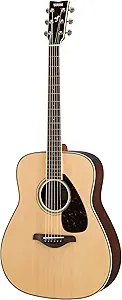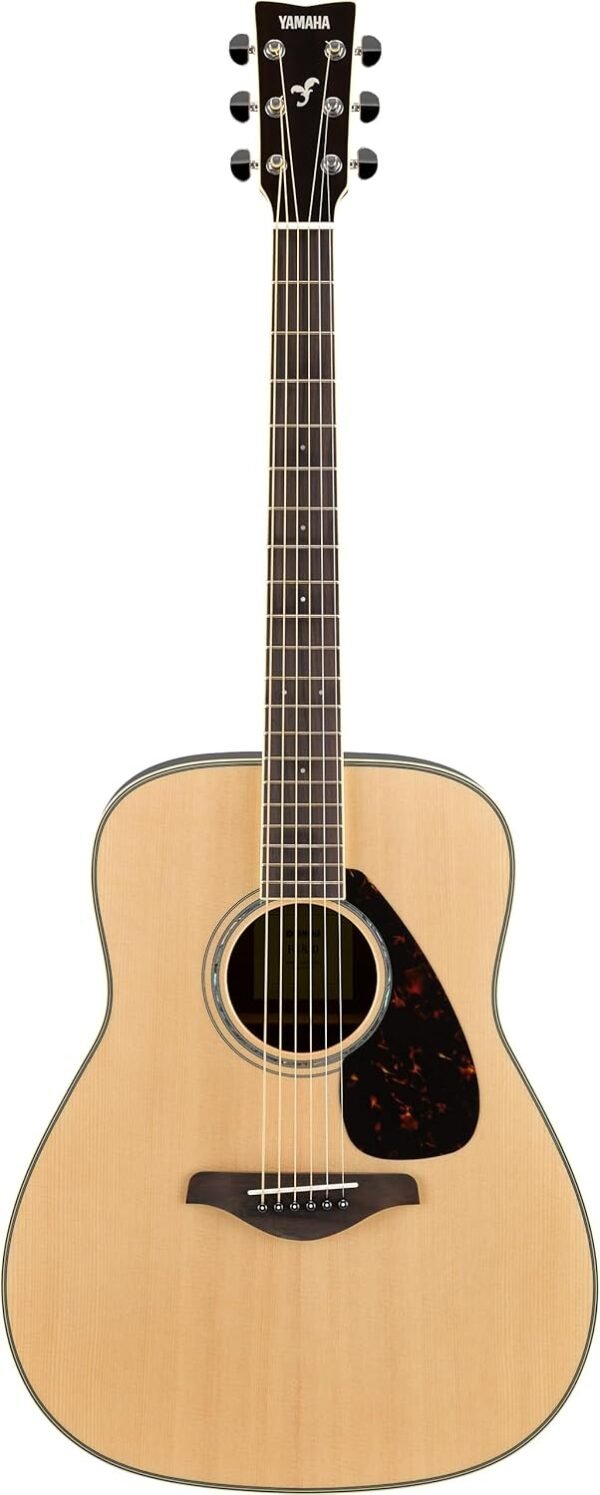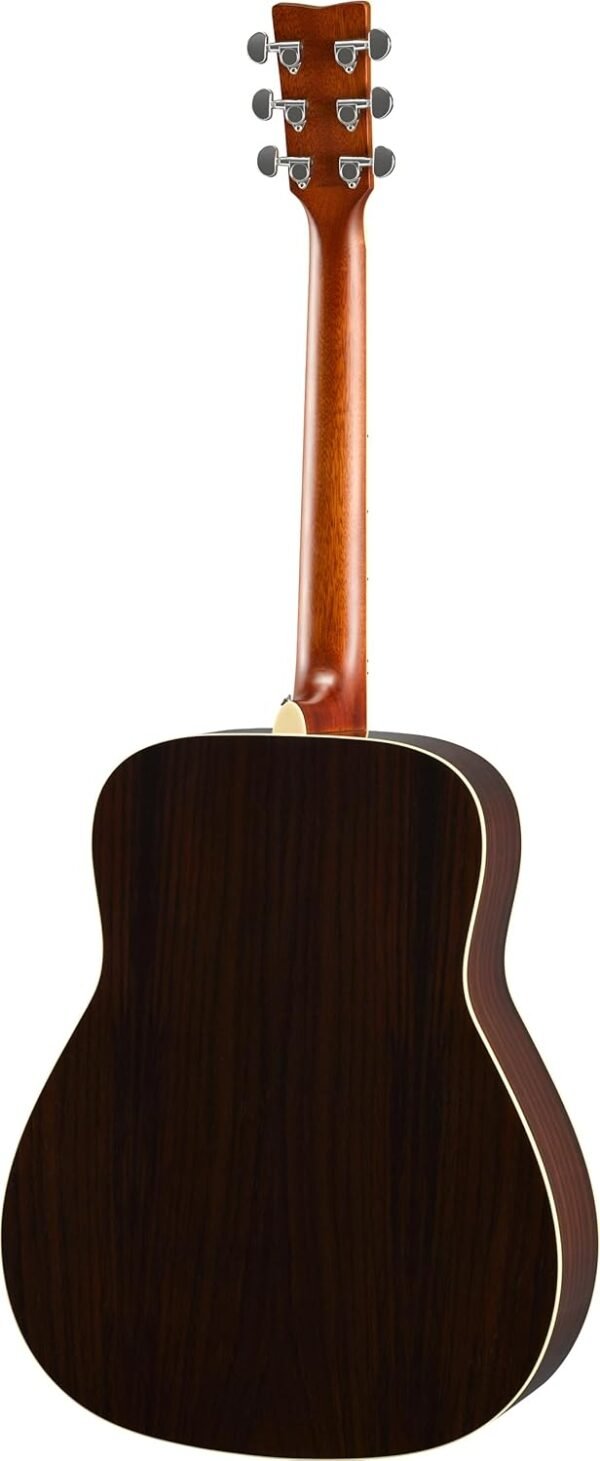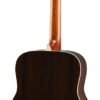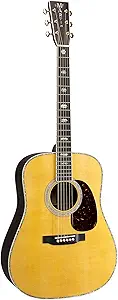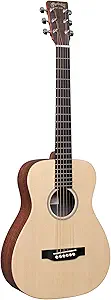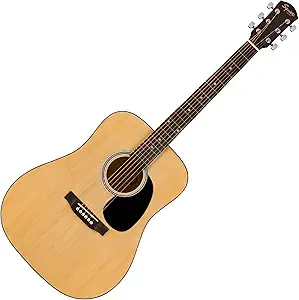Yamaha FG840 Acoustic Guitar Review Solid Top with Flamed Maple Design
Yamaha FG840 Acoustic Guitar Review Solid Top with Flamed Maple Design
- The rich tone and clarity of each note make this guitar perfect for both beginners and professionals.
- The flamed maple back and sides deliver a visually stunning and high-end appearance.
- Its lightweight build and balanced design ensure comfortable play for extended periods.
- The smooth rosewood fingerboard allows for effortless transitions between chords.
- Durable diecast tuners keep the guitar in tune for longer, even with frequent use.
As an Amazon Associate I earn from qualifying purchases.
Description
Aesthetic Design and Build Quality
The Yamaha FG840 Solid Top Acoustic Guitar immediately caught my eye with its flamed maple back and sides. It exudes a high-end appearance that feels like it belongs in a professional studio or on stage. The natural finish highlights the unique grain patterns of the wood, giving it a distinctive and almost exotic look. The solid spruce top isn’t just for show—it adds a resonant depth to the sound. I also appreciated the rosewood fingerboard and bridge, which not only look great but provide a smooth and responsive playing experience. Its nato neck felt sturdy yet lightweight, making long jam sessions more comfortable.
At 6.69 pounds, it’s not the lightest acoustic guitar, but the weight speaks to its solid construction. The dimensions—42.5 x 20.7 x 6.1 inches—felt perfect for me as someone who enjoys a standard dreadnought size. The diecast tuners were a nice touch, making tuning a breeze and helping the guitar hold its pitch for extended periods. However, I did notice that while the fixed bridge system is reliable, it limits certain customization options that some advanced players might look for.
Key Benefits
- Flamed maple back and sides for a premium aesthetic.
- Solid spruce top enhances sound clarity and resonance.
- Diecast tuners ensure stable and accurate tuning.
- Rosewood fingerboard and bridge provide excellent playability.
Sound Quality and Performance
As soon as I strummed the first chord, I could tell this guitar wasn’t just about looks. The sound projection is powerful and fills a room effortlessly, making it great for both solo practice and small performances. I found the tone to be bright yet balanced, with the flamed maple back and sides adding a certain clarity that allowed each note in a chord to stand out. This guitar truly shines in genres like folk, blues, and even light rock.
One thing I noticed was the transparent sound quality, which means that every note you play—whether a soft fingerpicking pattern or a heavier strum—comes through clearly. The adjustable truss rod was a lifesaver for tweaking the neck to my preferred action height, ensuring smooth playability. However, the alloy steel strings, while durable, felt a bit too harsh on my fingers during the first few sessions, though this is something that can improve with breaking them in or swapping them out.
Areas for Improvement
- The alloy steel strings may feel too rigid initially.
- Limited customization due to the fixed bridge system.
Target Audience and Playability
This guitar seems tailored for intermediate players who want to upgrade from a beginner model and need something reliable for gigs or recordings. As someone who considers themselves more of an advanced hobbyist, I found it very satisfying to play. The rosewood fingerboard especially stands out for its smoothness, making chord transitions and barre chords much easier. For newer players, it might take a bit of time to adjust to the slightly larger body size, but the sound payoff is worth it.
I also let a friend, who’s relatively new to guitar, give it a try. They loved how the solid spruce top made even simple chords sound fuller. However, they found the initial setup a bit daunting, and I had to explain how to use the adjustable truss rod to fine-tune the action.
Drawbacks
- The weight might feel cumbersome for smaller players or prolonged use.
- Beginners may find the setup process a bit overwhelming without guidance.
Competitive Options
When comparing this model to other guitars in its range, the flamed maple back and sides stand out as a major advantage. Many competitors in this price range—like the Fender CD-60S or the Epiphone DR-100—offer solid tops as well but lack the premium aesthetic and tonal clarity brought by the maple back and sides.
That said, the Yamaha FG840 does fall slightly short in terms of versatility. For example, the Fender CD-60S features a cutaway design that allows for easier access to higher frets—a feature missing here. However, the Yamaha’s sound clarity and build quality put it ahead of the Epiphone DR-100, which can sometimes feel flimsy in comparison.
Value for Money
Given its features and build quality, this guitar offers excellent value for money. The solid spruce top and flamed maple design are features you’d typically associate with pricier models. While it’s not the cheapest option out there, its durability and sound quality justify the investment, especially for someone looking to own a guitar that can grow with them as they improve their skills. I might not recommend it to absolute beginners due to the initial string stiffness and setup process, but anyone with a bit of experience will likely find it worth every penny.
Additional information
| Item Weight | 6.69 pounds |
|---|---|
| Product Dimensions | 42.5 x 20.7 x 6.1 inches |
| Item model number | FG840 |
| Is Discontinued By Manufacturer | No |
| Back Material | maple |
| Body Material | Maple |
| Color Name | Natural |
| Fretboard Material | Rosewood |
| String Material | Alloy Steel |
| Top Material | spruce |
| Neck Material Type | Nato |
| Number of Strings | 6 |
| Guitar Bridge System | Fixed |

